Free Shipping on orders of $49+ | Signup for Direct Rewards
Free Shipping on orders of $49+ | Free Store Pickup | Signup for Direct Rewards
Free Shipping on orders of $49+ | Signup for Direct Rewards
Free Shipping on orders of $49+ | Free Store Pickup | Signup for Direct Rewards

Everybody loves a good beach day and since we live at the beach, we thought we’d share some of our tips and tricks on how to make every beach day epic. Now you don’t have to go to extremes to take your beach day up a notch, it just takes a few minutes to grab some essentials and you’re ready to roll.
Let’s jump right in, shall we?

Ok, so aquatic adventures look a little different when you’re entering from the beach rather than a boat. I mean, you don’t typically have to deal with sand in your fins or mask when you’re heading into the water from a boat.
As you start to research what site you want to explore, be sure to check the best times to dive the site as well as local knowledge. There might be something specific to that site that you don’t want to miss.
Before you head out, check the tide, current, waves, and wave intervals. Same as when you go out on a boat, but if you’ve been spoiled by going on dive charters, they usually check all these things for you before they decide what site you’re exploring that day. If you’re new to checking the dive info, it’s pretty easy. We use the Windy App then cross check with our weather app for the day. These two give you pretty accurate data for weather, wind, tide, current, wave height, and wave intervals.
Some dive sites are tide dependent, like Blue Heron Bridge. Others, you can usually dive or snorkel them any time, but knowing the tide schedule allows you to better plan your activities so you don’t wear yourself out fighting the current as you come and go.
Now, go ahead and get comfortable with the fact that the first few times you do this, you’ll likely look like it’s your first time. It’s ok. Some days we still look like it’s our first time and we’ve been doing it for years.
Note that any time we do a beach or shore dive, we prefer open heel fins (except for freediving). Before leaving the car, we don our dive boots so we don’t have to contend with sand in our shoes as we dive. We learned a long time ago that even one grain of sand can turn a fun dive or snorkel into a painful day. Additionally, if traversing slippery surfaces, hot sand, or a rocky entry, it gives your feet some protection and better traction.
Of all the aquatic activities, we feel like snorkeling is the easiest to get in and out of the water without looking like a novice. We typically slip our fins over our wrist, make sure our snorkel is attached to our mask and put a drop of our favorite mask defogger in our lens. Rubbing in the defog, we walk into the water to about waist deep, dip the mask in the water, drain it, and don it. Slip on your fins while keeping your balance - plan it with the timing of the waves and it’ll be easier.
Off we go for a snorkeling adventure.
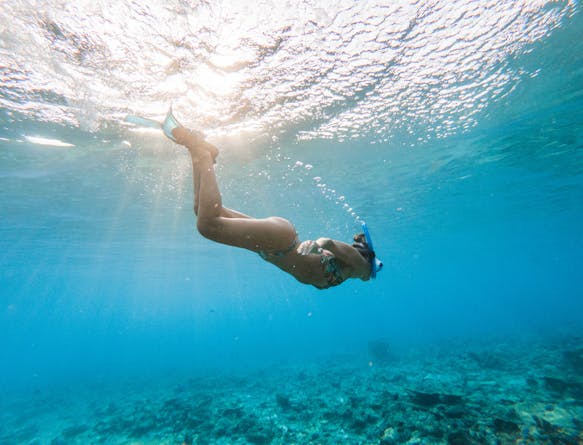
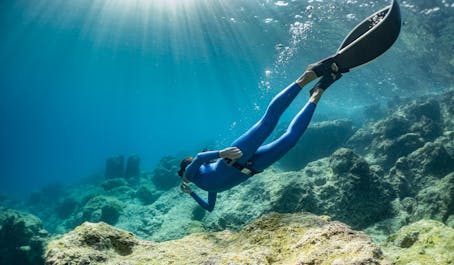
Freediving is definitely the second easiest. If you wear dive socks with your full foot fins, you might want to put them on before you leave the car for the same reasons we did with snorkeling. And the easiest way to carry your weight belt and weights is literally around your waist. So go ahead and don your weight belt at the car. It’ll also leave your hands free to carry your other essentials. Now do exactly as we recommended with the snorkeling…unless you’re diving specialty fins like carbon fiber or fiberglass fin blades. With those fins, you’ll want to get out into deeper water before you try to don them so you don’t damage your fin blades. And you’re off, dipping below the surface as your heart desires and surfacing for air as your lung capacity and training require.
Surface Supplied Air Diving (Tankless Diving or Hookah Diving) is actually quite a breeze too. Again, we don our dive boots before leaving the car, then grab the Tankless Diving unit and other gear. The easiest way to transport the weight belts is to simply wear them so everyone goes ahead and dons their weight belt, dividing up the load appropriately. Once on the beach, we inflate the tube for the tankless unit and get everything working properly. After we check the gas or battery level, make certain everyone’s regulators are connected properly and attached to their weight belts, everyone helps take the unit into the water. Once it’s floating, you’re free to don your mask, regulator, and fins and head off to explore. Now that we think about it, because you’ve got a regulator, this might actually be the easiest of all the beach entries because you can go down, unencumbered, breathe, and don your fins while you descend.
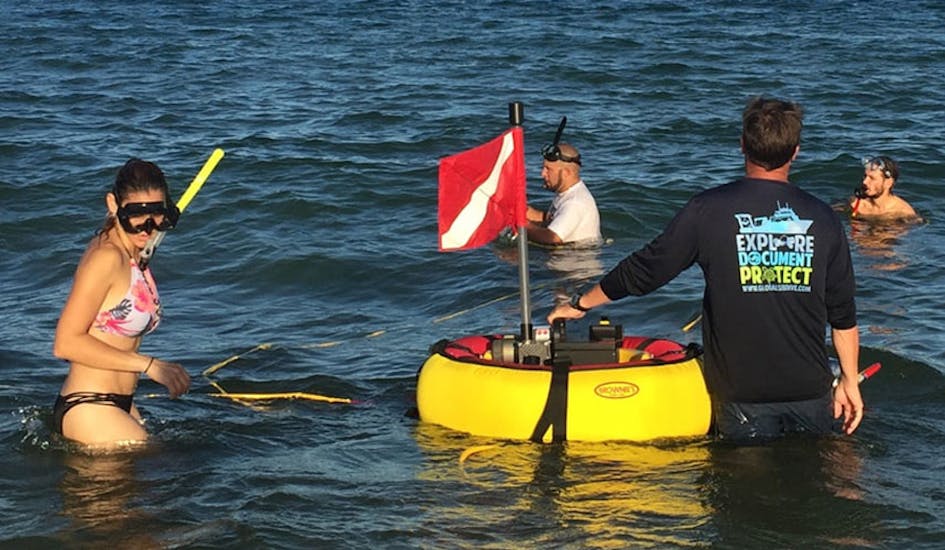
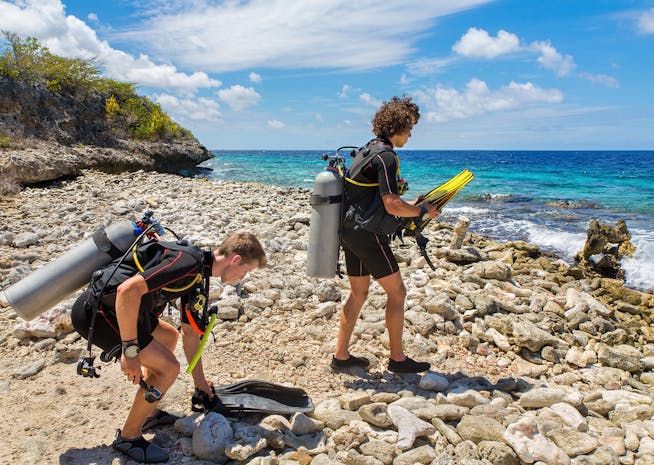
Scuba diving from the beach. We need a minute cause you’re speaking to our soul right here. Whether you’re dropping in on a sightseeing tour, spearfishing for dinner, or hunting for lobster (when in season), a shore dive is always a good idea. Now there are two easy ways to get your gear from the car to the beach. Either pack it all up in a bin and carry (or roll) it out to your spot on the beach…or put it all together, including your tank, and go ahead and wear it out to your spot on the beach. We usually choose to wear our gear because any time we can leave our hands free to carry additional gear, we prefer that over more trips to and from the car. We also prefer to get everything set up on the beach before trekking our dive gear out there. The biggest reason is keeping it off the sand as much as possible. The second reason is that your dive rig is much easier to don from the trunk of your car or the bed of your truck than from the ground. Just make sure your dive buddy turns your air on and you check your gauges before you try to go into the water.
Beach entry with dive gear can be a bit tricky. You’re top heavy and the waves can knock you over much easier. So let’s do this. Drop a couple of beads of your mask defog into your mask lens, slip your dive fins over your wrist and you’re off. And once your air is on and you’re headed for the water, go ahead and put some air in your BC. Rub the defogger into your mask lens as you walk and when you get to about waist deep, it’s easy to rinse and don your mask. Slip your regulator into your mouth and deploy your dive flag. You’re ready to don your fins, so sit back into your BC and relax. Since you put air in it earlier, you can float on the surface and easily don your fins while making sure your dive buddies are ready to go. And there you are, looking like a pro. Time to dive.
Not everyone can look like James Bond or a Bond Girl when exiting from a day in the water. Though we all like to think that’s exactly what we look like…we usually don’t. So how do you do it?
Once you’re done with the snorkeling adventure, make sure you’re close enough that you don’t have to try and swim far without fins. After you’ve been in the water with fins, it feels like so much more work without them. Now slip those fins off so you can walk easily once you get to solid ground. And when you’re where you can stand up reliably, go ahead and slip that mask off. Now for an epic Bond exit, put the fins and mask strap in one hand, time your movements with the movement of the ocean, and head for that beach. One steady step at a time. You got this.
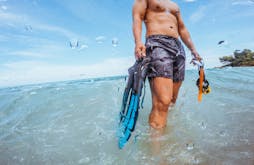

Now…with your long fins, you can totally pull off a Bond moment here. Depending on your blade type, you’re going to want to slip your fins off so they don’t hit the ocean floor. When you’re ready, slip those fins off like you’ve been doing it for years and gather them in one hand. Once you can stand on solid ground, slip your mask off and put it in the same hand as the fins then dip below the surface to smooth out your hair. I mean, we are going for a Bond-worthy exit so it matters. Start walking for the shore as soon as you emerge, water dripping. Now sling those fins and mask over your shoulder and own it. Slow, smooth, confident. If you’re anything like us, you’ll trip over your own two feet and wind up in a face plant right as you reach the beach. Epic.
The group that dives together…requires a coordinated effort for exiting together. Because these units work from a tethered line that links you all together, please don’t remove your regulator from your mouth until all divers have surfaced and reached solid ground. As soon as you reach solid ground, go ahead and doff your fins so it’s easier to move around. Don’t forget to hang on to them or loop them over your wrist. Once all your crew is on solid ground, you can, if conditions in the water permit, remove your mask and slip it over your wrist. Once you’re at about waist deep, go ahead and remove your regulator and you can assist each other with removing the tethers from your weight belts. Make certain someone has a hand on the Tankless Diving Unit at all times. As a group, you’ll want to move the Tankless Diving unit to the shore and carry it out of the water to your beach spot. Way easier when you time the removal of the unit from the water with the incoming current and the motion of the waves. Seriously, once you’ve done it a few times, you’ll look like old pros.
Look, if you haven’t been rolled trying to exit the water in full scuba gear…well, lucky you. It shouldn’t happen but it does when the wave hits just right and you’re a bit worn out from an extended dive. So don’t feel bad when it happens to you. And that right there is why we keep our mask and regulator engaged until we’re well within waist deep water unless the ocean is remarkably calm that day. Always better safe than sounding like you’re drowning as you emerge from the water. So surface, inflate your BC, roll onto your back and lazily kick your way to shore until you feel the sand hit your lower regions. Doff your fins, roll over to your hands and knees, get up - timing it with the waves, drop your reg out of your mouth, remove your mask and strut your stuff to your base camp.
You may have seen some take off their gear in the water and float it to the shore. You can do that, but then you gotta pick it up and carry it on up the beach to your base camp. We prefer easy, but you do what works for you.
The thing that can make or break your day is a good base camp. You’re going to want to bring along a beach blanket. Preferably one that doesn’t trap sand in it and quickly, easily shakes off everything that gets dropped, spilled, and kicked onto it. This will be the first thing you pull out on arrival and the last thing you put away before hopping back in the car. Also doubles as a great changing mat at the end of the day as the crew is getting into the car.
Once you have your base camp set up, it’s time to take care of a few items that, in our opinion, are key to any beach day being a success: sunscreen, lip balm, beach towels, hats, sunglasses, an extra hair tie, hydration, and nutrition.
The beach blanket can be a place to rest in between activities, but then you run the risk of your gear getting sandy and fouled up. So pop open a beach towel and grab a seat on that (if you didn’t bring a chair) after you dry off.
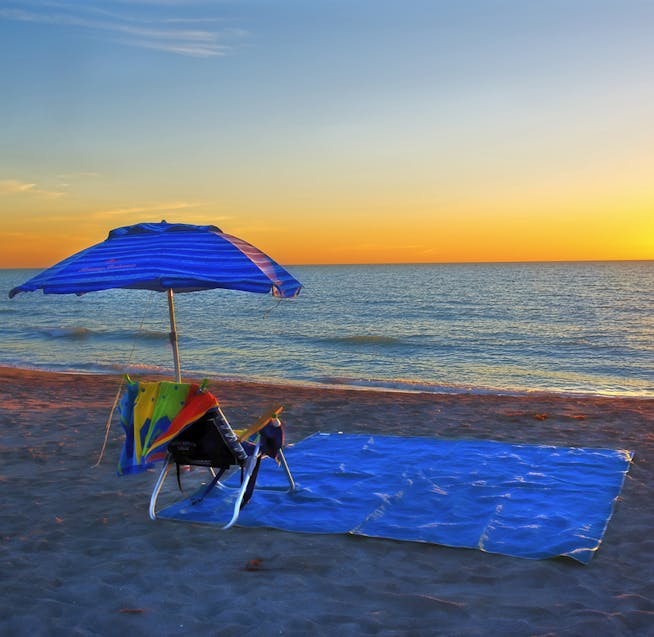
Hydration and nutrition - two things that often get overlooked or very little thought. However, possibly the most important items on your checklist. Water is always good to bring along and we highly recommend bringing plenty of it. When diving, hydration is a very important aspect of avoiding ‘the bends’. Whether you choose to add an electrolyte replenishing beverage or two to your mix is totally up to you, your crew, and your preferences. And though there are an array of pre-portioned snacks available, we highly recommend fresh fruit. An apple, orange, or banana all come with their own ‘wrapper’ that doesn’t add to the single use plastics problem. You and your crew will, after all, need fuel for the second dive and all the snorkeling adventures.
Now, every beach day can be made better by adding a few extras that take your day from fun to epic. We’re talking about bringing along the gear to go explore the amazing water as well as the extras for on land between explorations. Whether you and your crew love snorkeling, freediving, scuba diving, or tankless diving, you’ll want to bring all that gear along and set it up on your base camp blanket. And if there’s a mix of preferred activities, everyone can explore and have fun as their interests allow.
Next, grab a few beach chairs that are lightweight and easy to carry along. This gives you a spot to rest between activities without having to be in the sand. You’ll want a few because if you bring only one…everyone will end up in your chair (and a good beach chair is highly underrated).
If you prefer games in between aquatic activities, bring a ball, deck of cards, book, or sand toys. Who knows, your game of catch on the beach might just bring a few new friends into your world. And since almost everyone takes their phone along, make sure you snap a few epic pics along the way.
The only thing you have left to decide is which beach you’re exploring today.
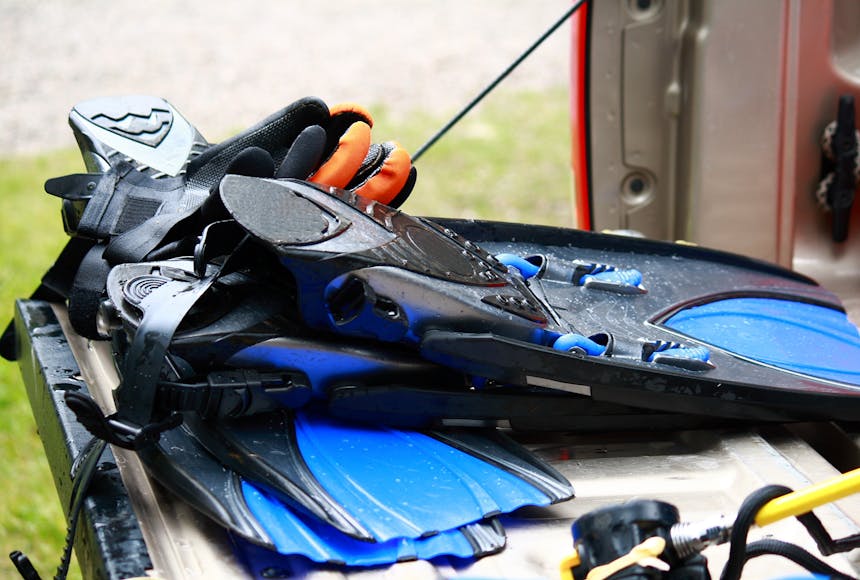
As you pack up the day and head back to the car, you’ll be oh so happy to see those bins in your trunk or truck bed. You can toss all the soggy, sandy gear in them without another thought. And all that sand and water will be contained in the bin. Once you’re home…just pull that bin out of the car and take it where you can hose everything off and set it out to dry. If you threw wet towels, shirts, or bathing suits into a bin, they go straight into the washer. Making cleanup easy, especially after a day of fun in the sun.
Pop out to the beach often enough, and it’ll become a routine that has you out the door in minutes. But alas, we might be spoiled. Every day has the potential to become a beach day when you live in Florida.
See ya out there.
Beach Blanket
Beach Towels
Sunscreen
Sunglasses
Hat
Lip Balm
An Extra Hair Tie
Water
Snacks
Beach Chair
Beach Umbrella
Book
Games
Cards
Sand Toys
Trash Bag

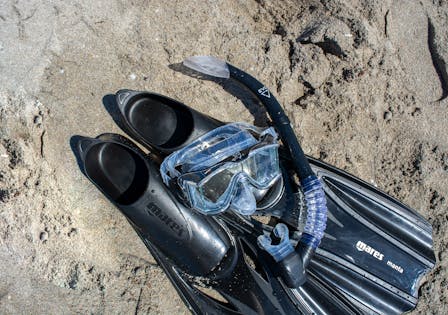
Mask
Fins
Snorkel
Sunscreen for your back
Rashguard
Leggings
Wetsuit
Underwater Camera
Dive Boots or Dive Socks
Low Volume Mask
Long Blade Fins
J-type Snorkel
Dive Weights
Weight Belt
Rashguard
Leggings
Wetsuit
Underwater Camera
Dive Socks
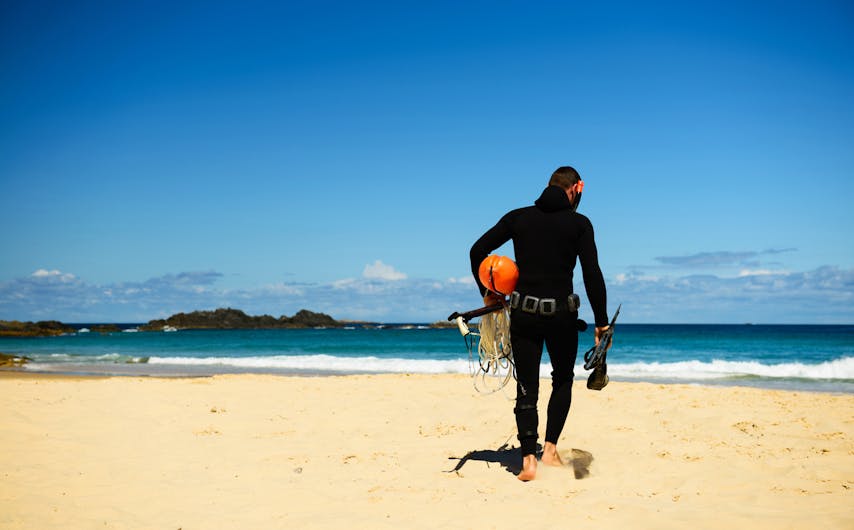
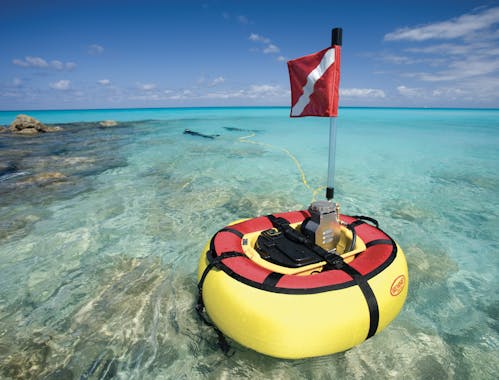
Tankless diving system
Dive Weights
Mask
Fins
Snorkel
Dive Computer
Rashguard
Leggings
Wetsuit
Underwater Camera
Dive Boots or Dive Socks
Tank
BCD
Regulator w/ Octo
Gauges
Dive Computer
Dive Weights
Mask
Fins
Snorkel
Rashguard
Leggings
Wetsuit
Underwater Camera
Dive Gloves
Dive Hood
Dive Boots or Dive Socks
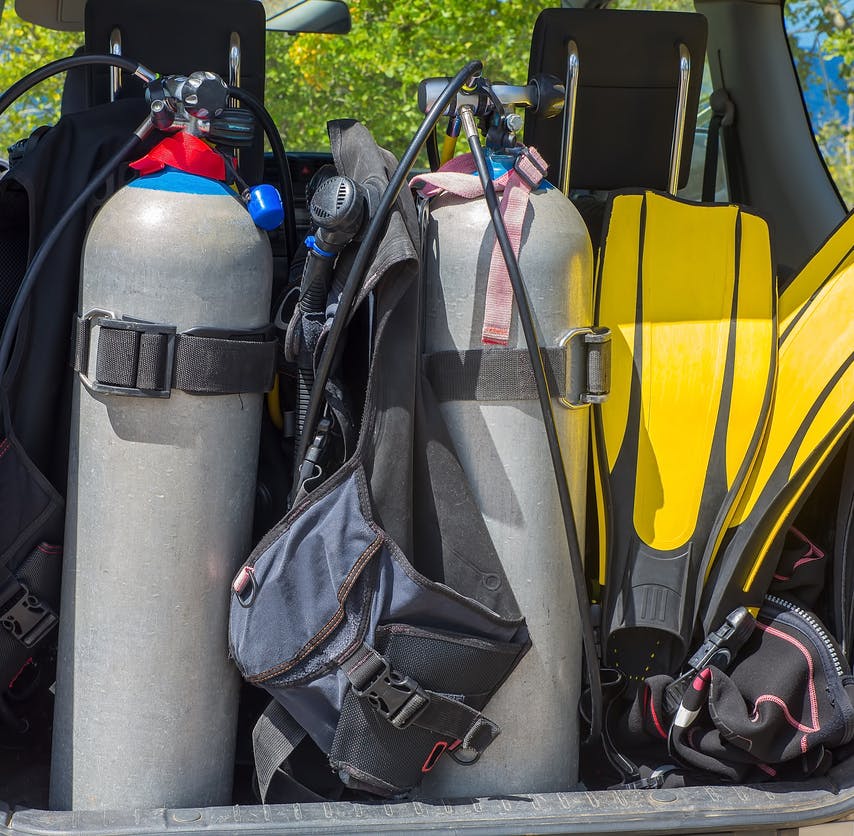
If you tuck each of the corners under the sand, they’re more likely to stay put. On a particularly windy day, determine the direction of the wind and tuck the entire edge of your blanket into the sand on that side. Just scoop it down like you’re folding it under itself and the weight of the sand will help it stay put.
Wrong. Keep a couple of storage bins in your trunk specifically for your gear. When you come out of the water, take your gear off and drop it all into the bin(s). For added protection, lay an extra towel down in the base of your trunk before loading anything into it for your beach day. That way, it catches anything you missed getting in the bins at the end of the day. Easily, all that water and sand stays contained.
Before getting out of the vehicle to start your beach day, put towels on the seats and floorboards. When you get back in the vehicle after your day at the beach, most of the sand will collect on the towels and you have way less to contend with next time you go to clean out the vehicle.